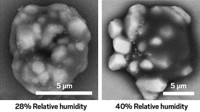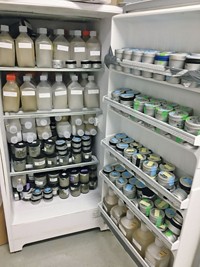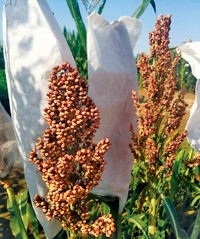Advertisement
Grab your lab coat. Let's get started
Welcome!
Welcome!
Create an account below to get 6 C&EN articles per month, receive newsletters and more - all free.
It seems this is your first time logging in online. Please enter the following information to continue.
As an ACS member you automatically get access to this site. All we need is few more details to create your reading experience.
Not you? Sign in with a different account.
Not you? Sign in with a different account.
ERROR 1
ERROR 1
ERROR 2
ERROR 2
ERROR 2
ERROR 2
ERROR 2
Password and Confirm password must match.
If you have an ACS member number, please enter it here so we can link this account to your membership. (optional)
ERROR 2
ACS values your privacy. By submitting your information, you are gaining access to C&EN and subscribing to our weekly newsletter. We use the information you provide to make your reading experience better, and we will never sell your data to third party members.
Infectious disease
Climate change could threaten clean water supplies
A waterborne virus adapted to warmer conditions proved harder to kill in the lab
by Benjamin Plackett, special to C&EN
September 25, 2020

A certain type of virus that is adapted to live in hotter water is also more likely to be resistant to chlorine disinfectants. That may have implications for keeping diseases out of the lakes or reservoirs people use for swimming or drinking in response to climate change (Environ. Sci. Technol. 2020, DOI: 10.1021/acs.est.0c03199).
It’s not easy for a virus to stay intact outside of its host. Sunlight, temperature, chemical disinfection, and digestion by other microbes—referred to as microbial grazing— are its main threats. A team of scientists wanted to know how changes in these environmental conditions might influence the evolution of a group of viruses known as enteroviruses, so they propagated a strain called echovirus 11, a waterborne pathogen that can cause a range of illnesses including gastroenteritis.
They cultivated the virus in four different environments corresponding to temperatures that are commonly found in temperate and tropical bodies of water: darkness at 10°C; simulated sunlight at 10°C; darkness at 30°C; and simulated sunlight at 30°C. After roughly 200 viral generations, the team deemed the populations to be adapted to their respective circumstances. The researchers then exposed the viruses to survival threats: microbial grazing, increased simulated sunlight, temperatures up to 50°C, and chlorine.
There was no significant difference among the enterovirus populations in their resistance to microbial grazing or increased simulated sunlight. But it was a different story when it came to heat and chemical disinfection. The warm-adapted populations tolerated higher temperatures better and when introduced to the colder conditions, even outperformed the cold-adapted viruses. The warm-adapted strains were also more resistant to chlorine.
“We rely on disinfection to get rid of pathogens that come into the water supply,” says study co-author Tamar Kohn, an environmental engineer at the Swiss Federal Institute of Technology, Lausanne (EPFL). “When we took the heat adapted viruses and disinfected them, they turned out to be more difficult to kill.”
These findings could be important in the future in temperate countries as the climate warms, but for equatorial regions, the implications could be immediate, Kohn says.
“This study presented very important suggestions” regarding enterovirus evolution under global warming,” says Daisuke Sano, an environmental engineer at Tohoku University. “[It] implies higher temperature is one of the selection pressures on an enteric virus population, and the selected populations may have tolerance to chemical disinfectants,”
Water management may need to adapt if future studies replicate this data, Kohn warns. If it becomes more difficult to disinfect water, “we might need to change our practices, whether that’s using more chlorine or switching techniques to things such as radiation and UV sterilization,” Kohn says.





Join the conversation
Contact the reporter
Submit a Letter to the Editor for publication
Engage with us on Twitter